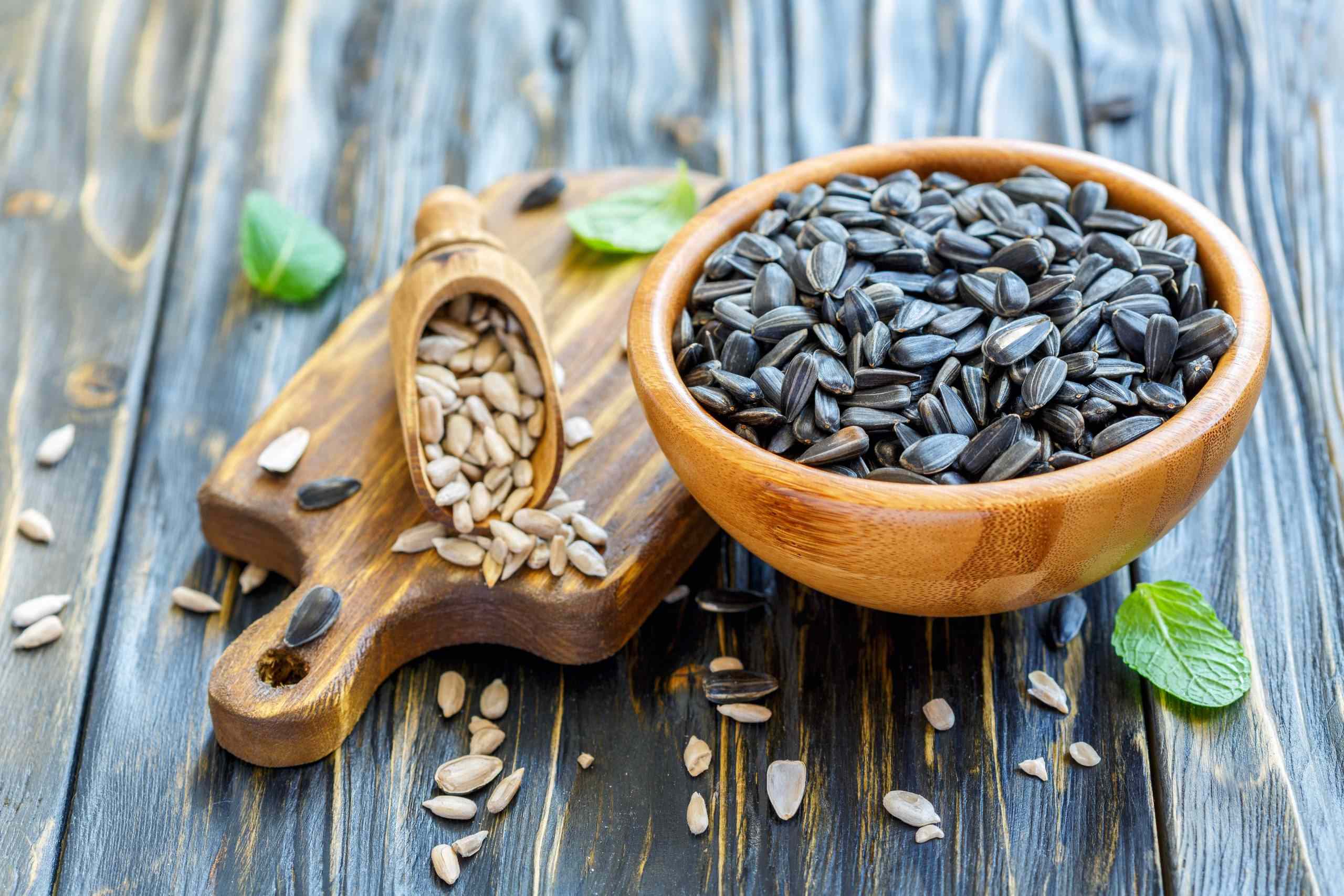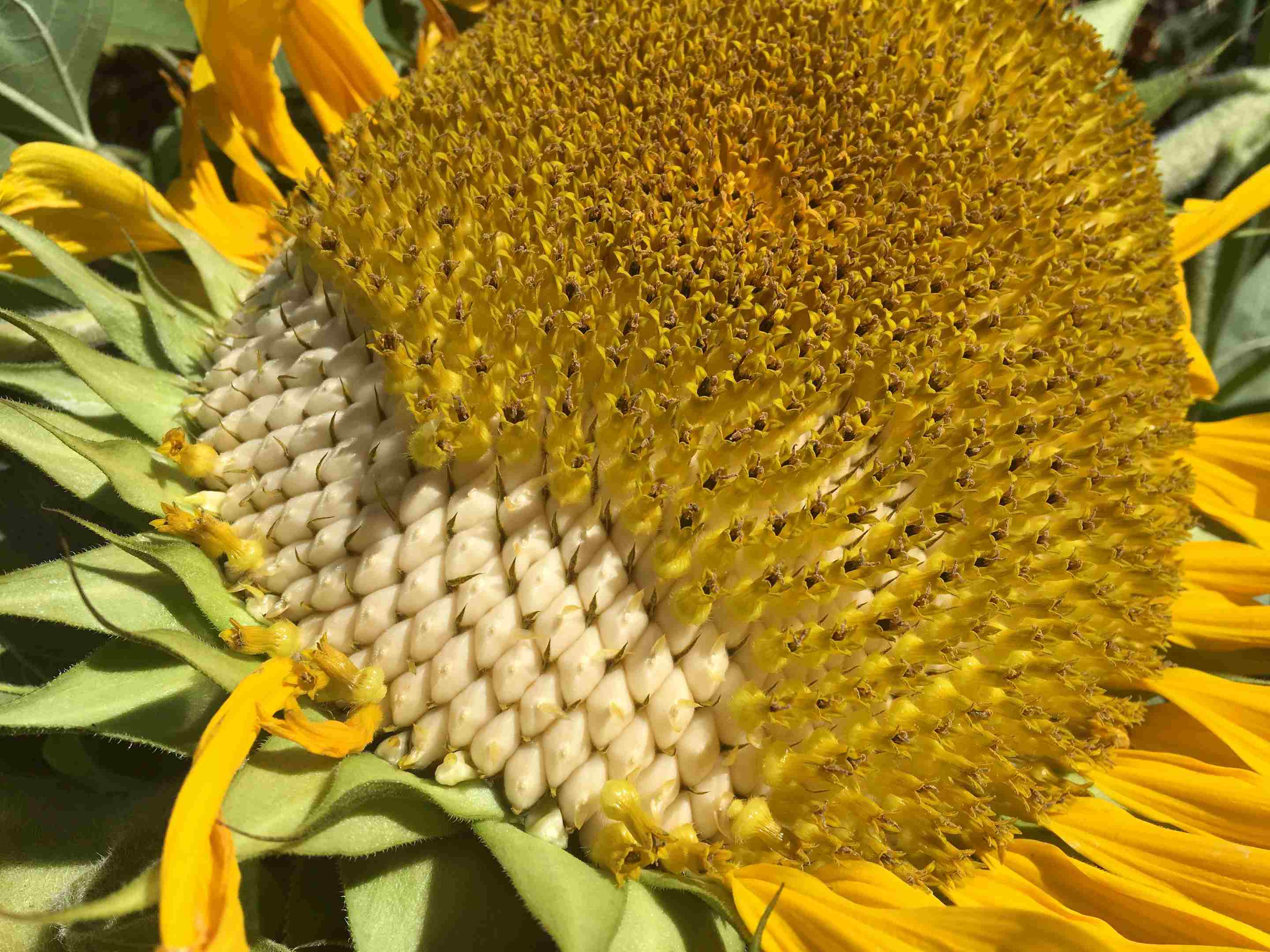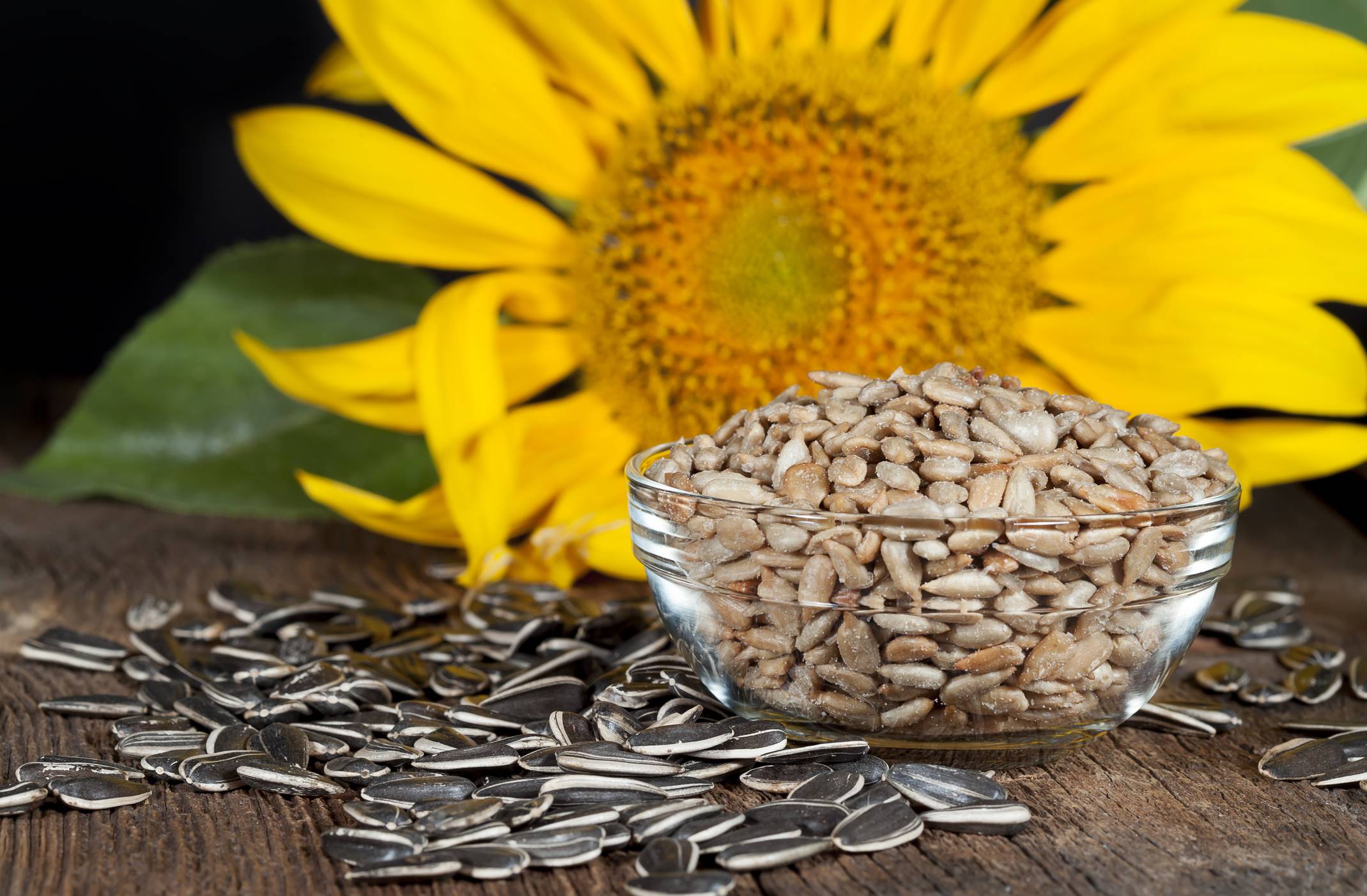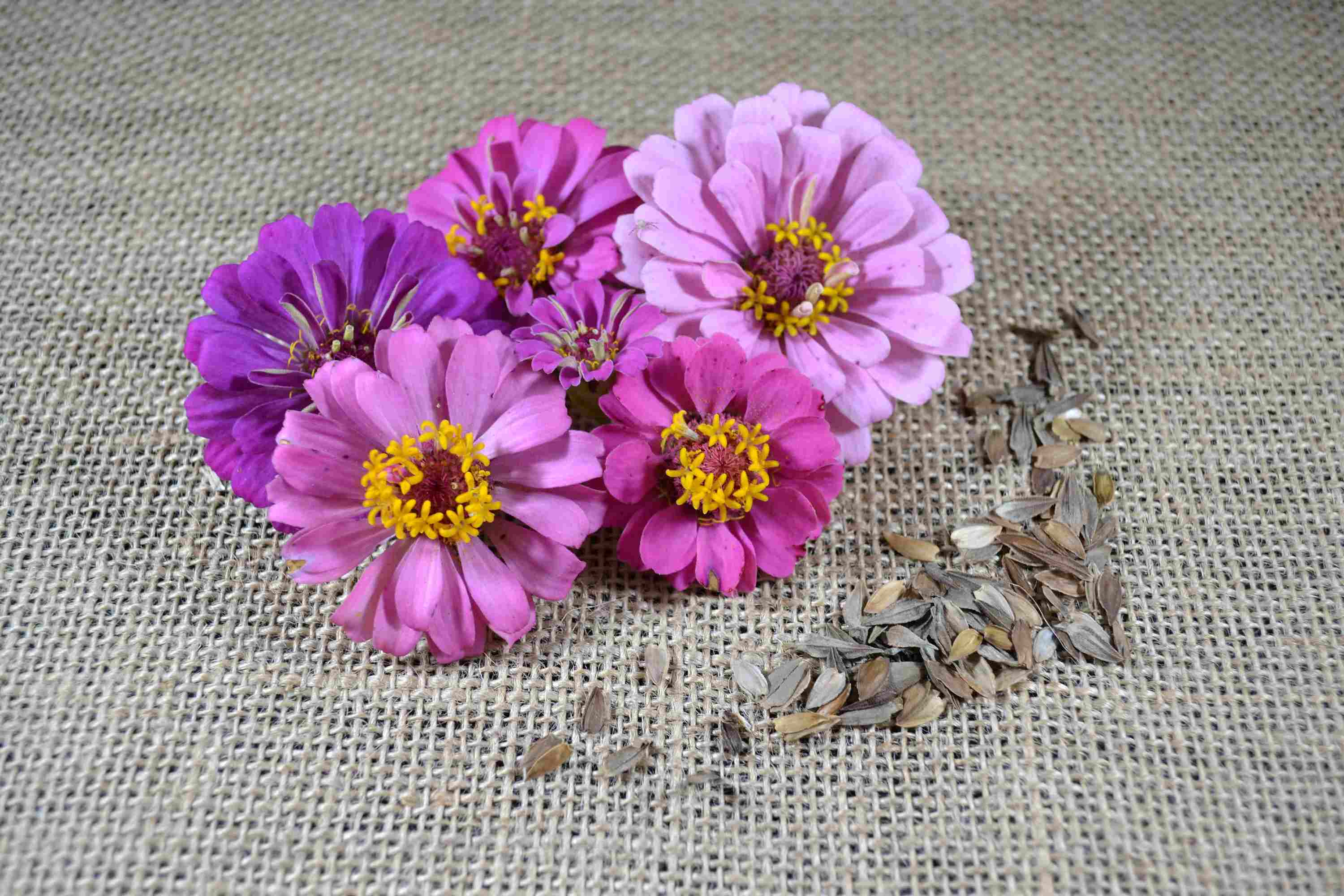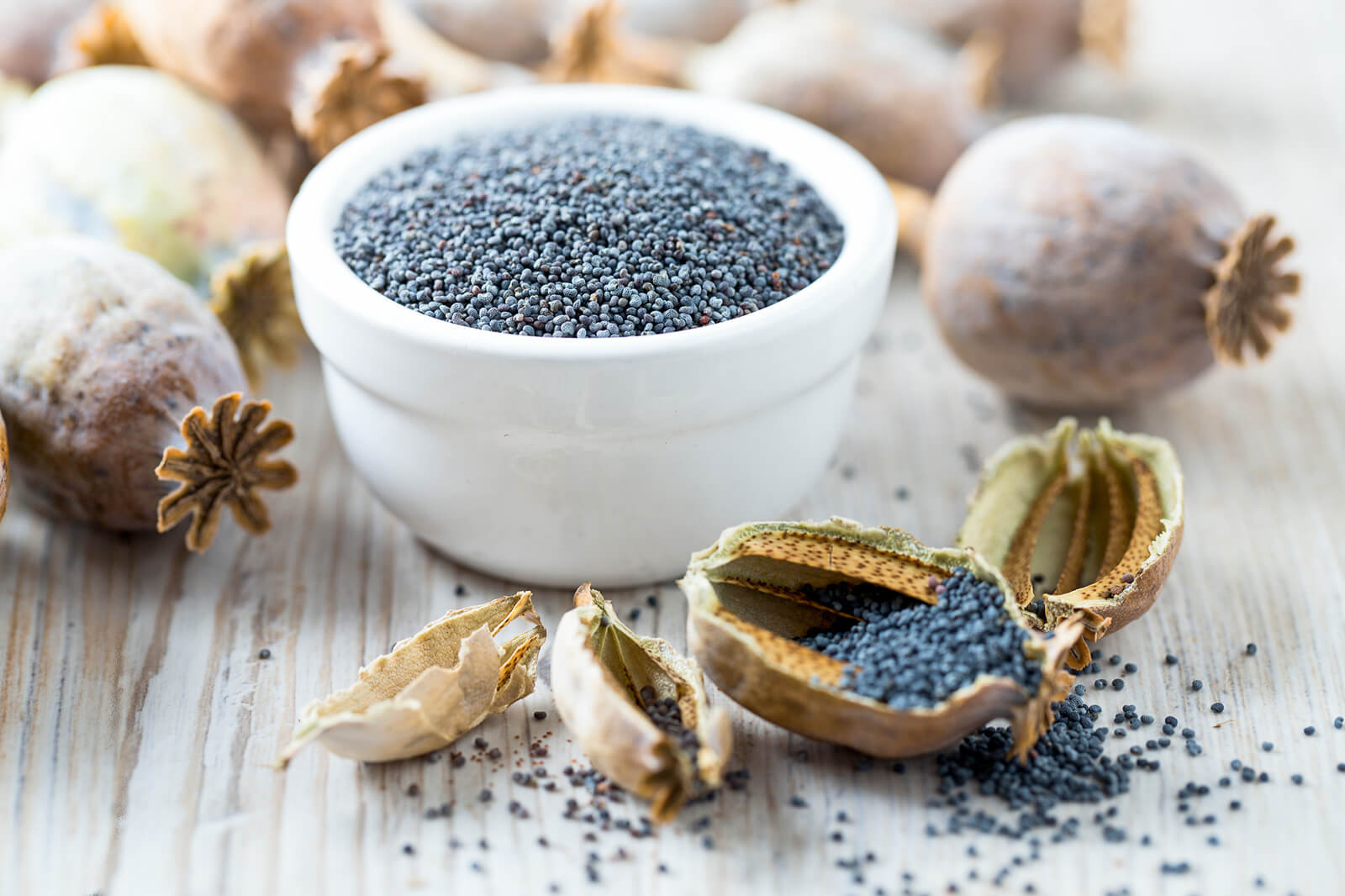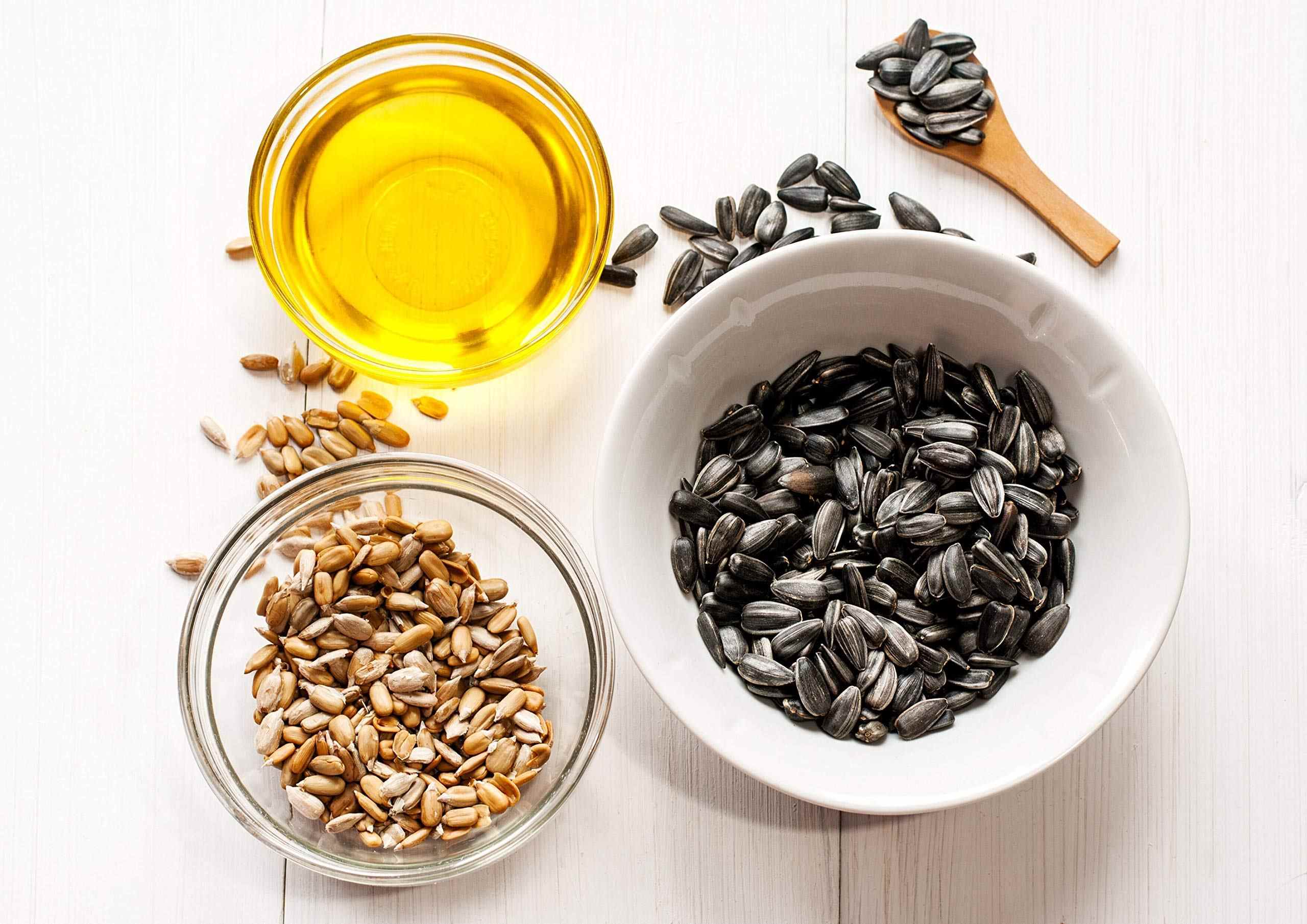Home>Types of Gardening>Ornamental Gardening>How To Plant Sunflowers From Seeds
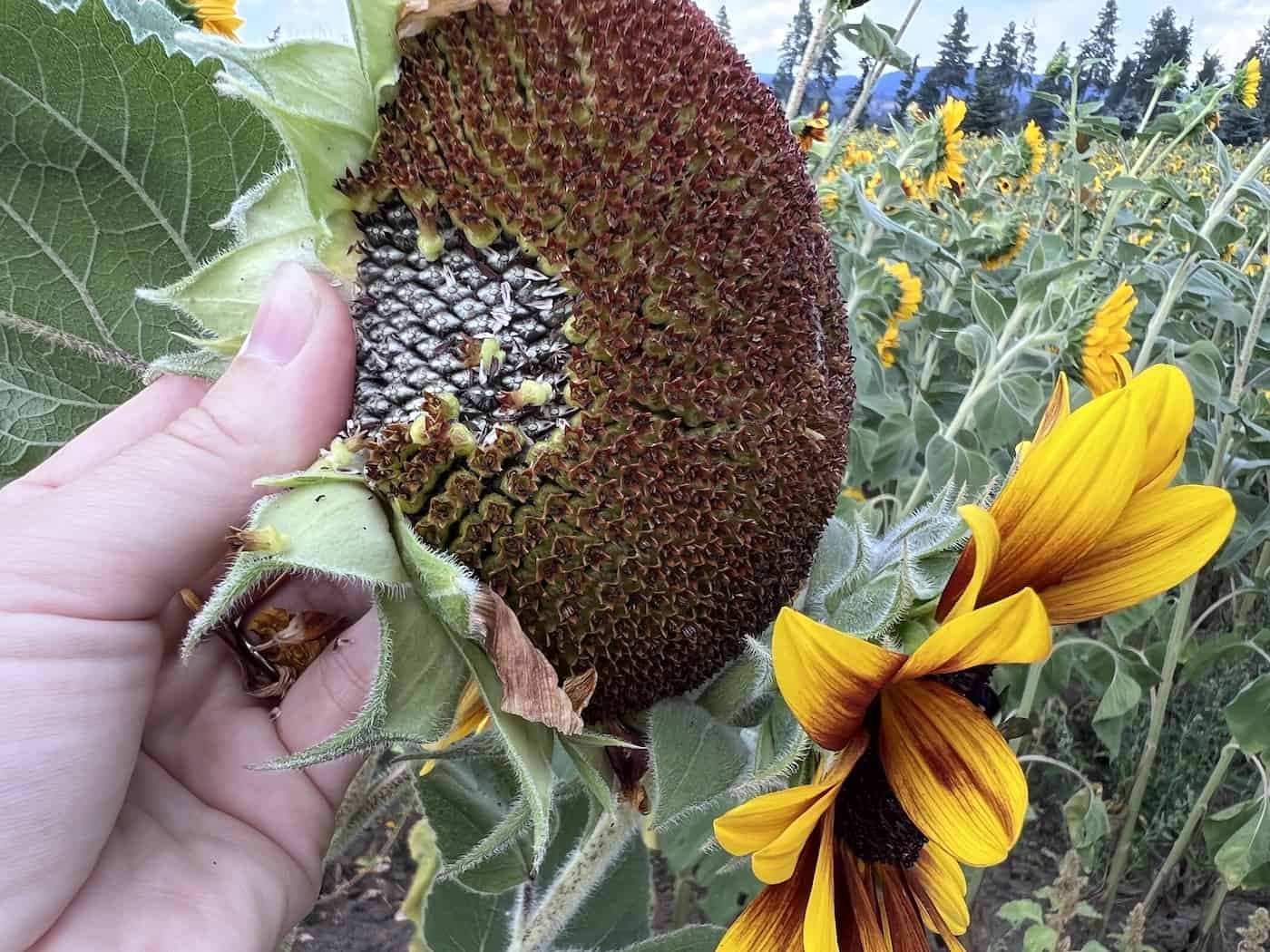

Ornamental Gardening
How To Plant Sunflowers From Seeds
Modified: January 22, 2024
Learn how to plant sunflowers from seeds and create a stunning ornamental garden with our step-by-step guide. Grow beautiful sunflowers with ease!
(Many of the links in this article redirect to a specific reviewed product. Your purchase of these products through affiliate links helps to generate commission for Chicagolandgardening.com, at no extra cost. Learn more)
Table of Contents
Introduction
Welcome to the vibrant world of ornamental gardening, where the majestic sunflower takes center stage as a symbol of joy and vitality. Planting sunflowers from seeds is a rewarding journey that allows you to witness the remarkable transformation from a tiny seed to a towering botanical marvel. Whether you are a seasoned gardener or a novice enthusiast, cultivating sunflowers offers a delightful and fulfilling experience.
In this comprehensive guide, we will explore the art of planting sunflowers from seeds, providing you with valuable insights and practical tips to ensure a successful and thriving sunflower garden. From selecting the right seeds to nurturing the seedlings and harvesting the bountiful seeds, each step contributes to the enchanting process of cultivating these radiant blooms.
Join us as we embark on this horticultural adventure, where we delve into the intricacies of choosing the perfect sunflower seeds, preparing the ideal planting location, and caring for the sunflower seedlings with dedication and expertise. With a touch of creativity and a dash of green-thumb enthusiasm, you can elevate your garden with the timeless beauty of sunflowers, creating a picturesque tapestry of nature's splendor right in your backyard.
So, roll up your sleeves, gather your gardening tools, and let's sow the seeds of knowledge as we uncover the art and science of planting sunflowers from seeds. Get ready to witness the magic of nature unfold before your eyes as we nurture these iconic blooms from tiny seeds into radiant, sun-kissed giants that will brighten your days and inspire awe in all who behold them.
Choosing the Right Sunflower Seeds
Before embarking on your sunflower planting journey, it is crucial to select the right sunflower seeds to ensure a thriving and visually stunning garden. When choosing sunflower seeds, consider factors such as the variety, size, and growth characteristics, as these elements will influence the overall aesthetic and vitality of your sunflower garden.
1. Variety Selection: Sunflowers come in a diverse array of varieties, each possessing unique traits that contribute to their appeal. From the classic Giant Sunflowers, which can reach towering heights, to the vibrant and multi-petaled Teddy Bear Sunflowers, the options are plentiful. Consider the available space in your garden and the visual impact you wish to achieve when selecting the variety. Additionally, take into account the local climate and growing conditions to choose a variety that thrives in your region.
2. Size and Growth: Sunflowers vary in size, with some reaching impressive heights while others remain more compact. Taller varieties, such as the Russian Mammoth, can soar to heights of 10 feet or more, creating a striking focal point in the garden. For smaller spaces or container gardening, opt for dwarf or mid-sized sunflower varieties that are better suited to confined environments.
3. Color Palette: Sunflowers exhibit a stunning range of colors beyond the traditional golden yellow. Explore options such as the rich burgundy hues of the Moulin Rouge variety or the warm, bronze tones of the Earthwalker sunflower. By incorporating a diverse color palette, you can elevate the visual allure of your garden and create captivating contrasts.
When purchasing sunflower seeds, seek out reputable suppliers or nurseries that offer high-quality seeds. Look for indicators of seed viability and freshness, such as plump, undamaged seeds with no signs of mold or discoloration. Additionally, consider organic or heirloom seed options to align with sustainable gardening practices and preserve the genetic diversity of sunflower varieties.
By carefully selecting the right sunflower seeds based on variety, size, growth characteristics, and color palette, you lay the foundation for a captivating and thriving sunflower garden that will enchant and inspire all who behold its radiant blooms.
Selecting the Planting Location
Choosing the ideal planting location is a pivotal step in creating a flourishing sunflower garden. Sunflowers are renowned for their affinity toward sunlight, requiring ample exposure to thrive and reach their full potential. When selecting the planting location, factors such as sunlight availability, soil quality, and spatial considerations play a crucial role in nurturing robust and vibrant sunflower blooms.
1. Sunlight Exposure: Sunflowers are aptly named for their love of sunlight, and as such, the planting location should offer abundant access to direct sunlight. Identify an area in your garden that receives at least 6-8 hours of sunlight per day, ensuring that the sunflower plants can bask in the nourishing rays that fuel their growth and vitality. Avoid locations shaded by tall structures or trees, as insufficient sunlight can impede the development of healthy sunflower blooms.
2. Soil Quality: Assess the soil quality in the chosen planting location to provide an optimal growing environment for your sunflowers. Sunflowers thrive in well-draining soil with a loamy texture, allowing for proper aeration and moisture retention. Conduct a soil test to gauge the pH levels and nutrient content, amending the soil as needed to create a fertile and balanced substrate for the sunflower seeds to take root and flourish.
3. Spatial Considerations: Consider the spatial requirements of the selected sunflower varieties when choosing the planting location. Taller sunflower varieties, such as the Russian Mammoth or Lemon Queen, benefit from ample space to stretch their towering stems and display their resplendent blooms. If space is limited, opt for compact or dwarf sunflower varieties that thrive in confined areas or containers, offering versatility in garden design.
4. Aesthetic Appeal: Beyond practical considerations, the planting location contributes to the overall aesthetic appeal of your garden. Visualizing the backdrop and surrounding landscape can guide the placement of sunflowers to create captivating vistas and harmonious compositions. Consider the interplay of colors, textures, and heights within the garden landscape to accentuate the natural beauty of the sunflowers and complement their radiant presence.
By thoughtfully selecting a planting location that prioritizes sunlight exposure, soil quality, spatial considerations, and aesthetic harmony, you set the stage for a captivating sunflower garden that flourishes in its chosen environment, captivating all who behold its vibrant display.
Preparing the Soil
Creating an optimal growing environment through soil preparation is paramount to the success of your sunflower garden. By tending to the soil with care and attention, you provide the essential foundation for robust root development, nutrient uptake, and overall plant vigor. The process of preparing the soil involves assessing its composition, amending as necessary, and cultivating a fertile medium that fosters the healthy growth of sunflowers.
1. Soil Assessment: Begin the soil preparation process by assessing the composition and characteristics of the soil in the chosen planting area. Conduct a simple texture test to determine whether the soil is predominantly clay, sand, or loam, as this insight guides the subsequent soil amendment steps. Additionally, consider conducting a soil pH test to ascertain the acidity or alkalinity of the soil, ensuring that it falls within the optimal range for sunflower cultivation, typically around a neutral pH of 6.0 to 7.5.
2. Amending the Soil: Based on the soil assessment findings, amend the soil to address any deficiencies and optimize its structure for sunflower growth. For clay soils, incorporate organic matter such as compost or well-rotted manure to improve drainage and enhance soil aeration. In sandy soils, adding organic amendments aids in increasing water retention and nutrient availability. Additionally, adjust the soil pH as needed by incorporating lime to raise pH or elemental sulfur to lower pH, promoting an environment conducive to healthy root development and nutrient uptake.
3. Fertilization: Prior to planting sunflower seeds, consider applying a balanced, slow-release fertilizer to enrich the soil with essential nutrients. A fertilizer with a balanced NPK (nitrogen, phosphorus, and potassium) ratio supports overall plant growth, root development, and flower production. Incorporate the fertilizer into the soil according to the manufacturer’s recommendations, ensuring even distribution and avoiding direct contact with the sunflower seeds to prevent potential seedling burn.
4. Cultivation and Bed Preparation: Cultivate the soil to a depth of 6-8 inches, breaking up clumps and creating a fine, crumbly texture that is conducive to seed germination and root penetration. Create raised beds or mounds if the soil tends to retain excessive moisture, providing improved drainage for the sunflower roots. Smooth the soil surface with a rake, removing debris and creating a level planting area that sets the stage for successful sunflower seed sowing.
By diligently preparing the soil through thorough assessment, targeted amendments, fertilization, and cultivation, you establish an optimal growing medium that nurtures the growth and vitality of sunflowers, setting the stage for a flourishing and visually captivating garden display.
Planting the Sunflower Seeds
As you embark on the exciting phase of planting sunflower seeds, attention to detail and proper technique are essential to ensure the successful germination and growth of these iconic blooms. The process of planting sunflower seeds involves strategic timing, spacing considerations, and nurturing the seeds with care to establish a thriving sunflower garden that will delight and inspire.
1. Timing and Season: Sunflower seeds thrive when sown directly into the soil after the last frost date, typically in late spring or early summer. Select a time when the soil has warmed to a temperature of at least 55°F (13°C), providing an optimal environment for seed germination and early root establishment. The warm, sunny days of late spring create favorable conditions for the initial growth of sunflower seedlings.
2. Spacing and Depth: When planting sunflower seeds, space them according to the specific variety’s growth characteristics. For larger varieties, such as the Russian Mammoth or Titan, space the seeds 24-36 inches apart to accommodate their robust growth and expansive root systems. For smaller or dwarf varieties, reduce the spacing to 12-18 inches to create a denser display. Plant the seeds at a depth of 1-2 inches, covering them with loose soil and gently firming the surface to ensure good seed-to-soil contact.
3. Sowing Technique: To sow the sunflower seeds, create small furrows or individual planting holes in the prepared soil, maintaining the recommended spacing between each seed. Drop the seeds into the furrows or holes, placing 2-3 seeds per location to account for potential variations in germination rates. Cover the seeds with soil and lightly water the planting area to initiate the germination process, ensuring that the soil remains consistently moist but not waterlogged during the initial growth phase.
4. Nurturing Seedlings: As the sunflower seeds germinate and the seedlings emerge, continue to monitor soil moisture levels and provide consistent, even watering to support their early growth. Once the seedlings reach a height of 4-6 inches, consider thinning them to maintain the recommended spacing and allow the strongest seedlings to thrive. Thinning involves carefully removing excess seedlings, leaving behind the healthiest and most robust plants to mature and flourish.
By adhering to strategic timing, precise spacing, proper sowing techniques, and attentive seedling care, you establish the groundwork for a thriving sunflower garden that will soon grace your landscape with its vibrant blooms and uplifting presence.
Watering and Caring for Sunflower Seedlings
As the sunflower seedlings emerge and embark on their journey toward maturity, diligent care and proper watering practices play a vital role in nurturing their growth and ensuring the development of robust, healthy plants. By providing consistent moisture, monitoring for potential issues, and offering attentive care, you can support the sunflower seedlings as they progress through their early stages of development, setting the stage for a flourishing garden display.
1. Consistent Moisture: Sunflower seedlings benefit from consistent moisture to support their initial growth and establishment. Water the seedlings regularly, ensuring that the soil remains evenly moist but not waterlogged. During dry periods or hot weather, pay particular attention to soil moisture levels, adjusting your watering frequency to prevent the soil from drying out. Aim to keep the soil consistently moist in the root zone, promoting healthy root development and minimizing stress on the young plants.
2. Deep Root Watering: When watering sunflower seedlings, encourage deep root growth by delivering water directly to the base of the plants. Use a gentle, directed flow of water to penetrate the soil and reach the root zone, allowing the roots to access moisture at a deeper level. Deep root watering promotes stronger, more resilient root systems, enhancing the plants’ ability to withstand environmental stressors and develop a sturdy foundation for future growth.
3. Mulching: Consider applying a layer of organic mulch around the base of the sunflower seedlings to conserve soil moisture, regulate soil temperature, and suppress weed growth. Organic mulches such as straw, shredded leaves, or wood chips provide a protective barrier that reduces moisture evaporation from the soil surface, supporting a more stable and favorable growing environment for the sunflower seedlings.
4. Monitoring for Issues: Keep a watchful eye on the sunflower seedlings for any signs of stress, pest infestations, or disease development. Early detection of issues allows for prompt intervention and mitigation, safeguarding the health and vitality of the young plants. Inspect the leaves, stems, and overall appearance of the seedlings regularly, addressing any concerns and implementing appropriate remedies to maintain their well-being.
By providing consistent moisture, promoting deep root watering, applying organic mulches, and vigilantly monitoring for potential issues, you nurture the sunflower seedlings with the care and attention they need to thrive, setting the stage for a vibrant and flourishing sunflower garden that will soon grace your outdoor space with its radiant blooms.
Sunflower Maintenance and Growth
As the sunflower seedlings mature into robust plants, ongoing maintenance and attentive care are essential to support their continued growth and development. By addressing key aspects such as fertilization, pest management, and structural support, you can nurture the sunflowers as they progress through their growth stages, ensuring their resilience and vitality as they reach toward the sun.
1. Fertilization: Throughout the growing season, provide the sunflowers with balanced fertilization to sustain their vigor and promote robust blooming. Apply a well-balanced, slow-release fertilizer around the base of the plants, following the manufacturer’s recommendations for application rates and frequency. The additional nutrients support healthy foliage, strong stems, and prolific flower production, contributing to a visually stunning and resilient sunflower display.
2. Pest Management: Monitor the sunflowers for potential pest infestations, particularly keeping an eye out for common pests such as aphids, caterpillars, and sunflower moths. If pest activity is detected, consider employing natural pest control methods such as insecticidal soaps, neem oil, or introducing beneficial insects to mitigate pest populations while minimizing the use of chemical interventions. Vigilant pest management safeguards the health and vitality of the sunflowers, preserving their ornamental appeal and structural integrity.
3. Structural Support: As the sunflowers grow taller and develop substantial flower heads, provide structural support to prevent stem breakage and maintain the plants’ upright posture. Install stakes or garden twine to gently secure the stems, particularly for taller varieties that may be susceptible to wind damage. By offering structural support, you safeguard the sunflowers against potential physical stressors, ensuring that they stand tall and resplendent throughout their growth and blooming stages.
4. Deadheading and Pruning: Throughout the blooming period, consider deadheading spent flowers to promote continuous blooming and prevent the formation of seeds, particularly if the primary focus is on ornamental display rather than seed production. Additionally, pruning away any damaged or diseased foliage maintains the overall health and aesthetic appeal of the sunflowers, redirecting the plant’s energy toward new growth and vibrant blooms.
By implementing a comprehensive approach to sunflower maintenance, including balanced fertilization, vigilant pest management, structural support, and strategic deadheading and pruning, you foster the continued growth and vitality of the sunflowers, ensuring a stunning and enduring display of nature’s splendor in your garden landscape.
Harvesting Sunflower Seeds
As the sunflowers reach the culmination of their growth cycle, the prospect of harvesting sunflower seeds presents an opportunity to reap the rewards of your gardening efforts and embrace the bountiful yield of these iconic blooms. The process of harvesting sunflower seeds involves strategic timing, proper seed maturation assessment, and meticulous seed extraction, culminating in a harvest that provides a rich source of nutrition, culinary potential, and the promise of future plantings.
1. Timing of Harvest: Monitor the sunflower heads as they progress through the blooming stage, observing the gradual development of the seeds within the central disk. As the flower heads mature and the seeds begin to ripen, the back of the flower head changes from green to a yellow or brown hue, and the seeds take on a plump, mature appearance. Wait to harvest until the majority of the seeds have ripened, as indicated by their firm texture and dark color, signaling readiness for harvest.
2. Seed Maturation Assessment: To determine the optimal timing for seed harvest, consider conducting a sample seed assessment by removing a few seeds from the flower head and inspecting their color and texture. Fully mature sunflower seeds exhibit a dark, almost black coloration with a firm, solid texture, indicating that they have reached their peak ripeness and are ready for harvest. Avoid harvesting prematurely, as underdeveloped seeds may not reach their full potential for culinary or planting purposes.
3. Seed Extraction: Once the sunflower heads have reached the desired stage of seed maturation, it is time to extract the seeds for storage and utilization. Cut the sunflower heads from the stems, leaving several inches of stem attached to facilitate handling. Remove the seeds by gently rubbing or brushing them from the seed head, collecting them in a container or onto a clean, dry surface. As you extract the seeds, discard any debris or non-seed materials, ensuring that the harvested seeds are clean and free from contaminants.
4. Drying and Storage: After harvesting, allow the sunflower seeds to dry thoroughly to reduce their moisture content and prevent mold or spoilage. Spread the seeds in a single layer on a tray or drying rack, placing them in a well-ventilated area with low humidity. Stir or agitate the seeds periodically to promote even drying. Once the seeds are fully dry, transfer them to airtight containers or resealable bags for storage, keeping them in a cool, dry location to maintain their quality and viability for future use.
By observing the timing of harvest, assessing seed maturation, carefully extracting the seeds, and ensuring proper drying and storage, you can savor the fulfillment of harvesting sunflower seeds, embracing the abundance and potential they offer for culinary creations, bird feeding, or future planting endeavors, celebrating the cycle of nature’s bounty in your garden.
